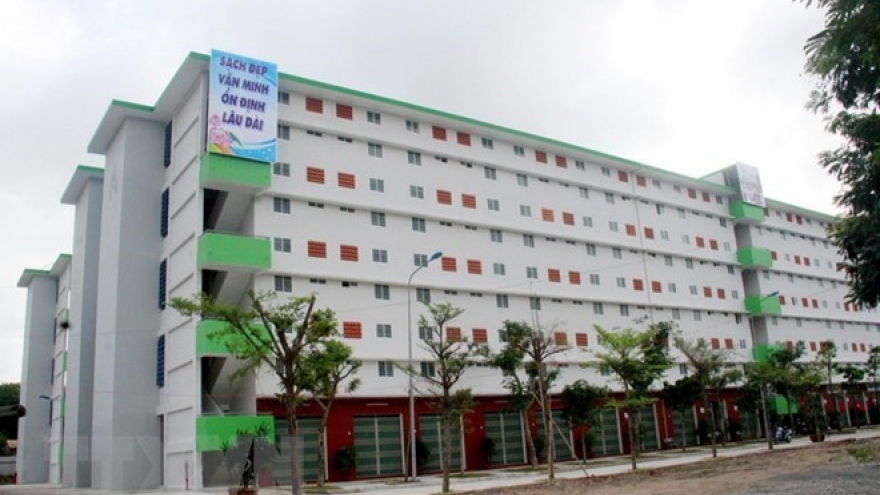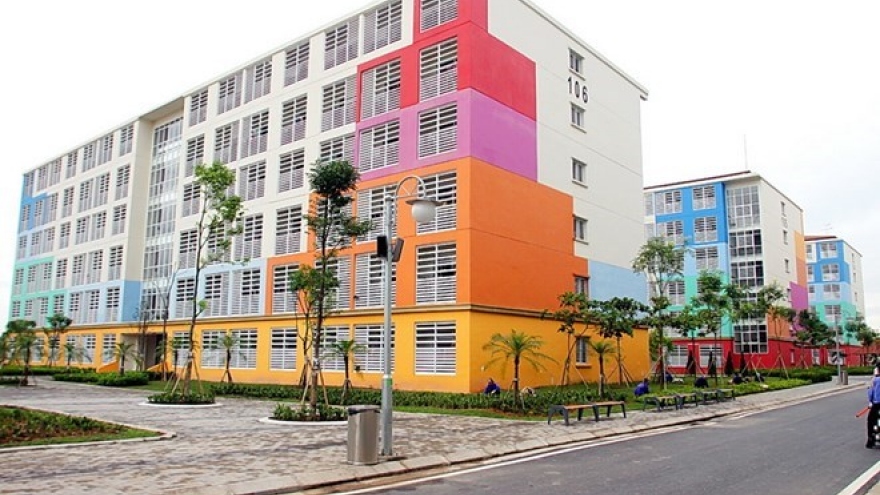Experts say addressing social housing bottlenecks a top priority
VOV.VN - Bottlenecks in social housing projects have once again become a controversial issue amid a rapid rate of urbanization and an increasingly high demand for affordable housing, a workshop in Hanoi heard on January 23.
 |
| At the workshop. |
In 2011, the Government approved a national housing development strategy by 2020 with a vision toward 2030. A number of sub-law documents and regulations were issued to help locals gain access to social housing projects.
Nguyen Van Sinh, Deputy Minister of Construction, stressed that the strategy and its detailed plans, jointly executed by ministries, agencies, and stakeholders, has yet to produce the expected results.
Sinh noted that numerous inadequacies have emerged since the implementation of the strategy. Although low-income buyers’ access to social housing has been boosted in recent years with 84 social housing projects being put into service and providing a total of 33,000 apartments.
The implementation of 135 affordable housing projects will go ahead with the provision of an expected 80,000 apartments.
Moreover, these outcomes have failed to meet expectations. Local demand for housing in urban areas is forecast to climb to 1 million apartments by 2020 whilst the annual supply is now just over 10,000 apartments.
A lack of capital for social housing projects and high lending rates have caused the biggest issues. As a result, many projects have failed to attract interest from investors and real estate developers.
Nguyen Quang, manager of the United Nations Human Settlements Programme in Vietnam, claims that housing is not only a simple product, but something that also has close links to social services.
Vietnam, like other developing countries, is facing an array of challenges in expanding its social housing projects due to their unreasonably high prices.
Quang cited a recent study as showing that the average prices of social housing are roughly 10 times higher than that of the gross annual income of a household.
The demand for local housing is rising as a result of rapid urbanization. Indeed, the rate has jumped by 0.8 per cent per year on average, raising from 21.7 per cent in 1999 to 35.7 per cent in 2017. Meanwhile, the annual urban population has grown by 2 to 3.4 per cent on average.
Institutional problems along with limited commercial lending has hindered many social housing projects, while land allocation and land-related costs often make social housing unaffordable.
At the workshop, several real estate firms raised their concerns on gaining payback from social housing investments as many find it difficult to maintain the price range of VND7 to 8 million (US$344) per meter of housing floor.
David Adamson, knowledge manager at Australia’s Compass Housing Services Co Ltd, offered a few solutions to the global challenge of affordable housing.
Many developed countries have managed to grow affordable housing schemes under the public-private partnership (PPP) investment form.
In Australia, the PPP format has been launched to nurture an alliance between the government and property firms in leveraging the access buyers have to affordable housing, Adamson noted.



